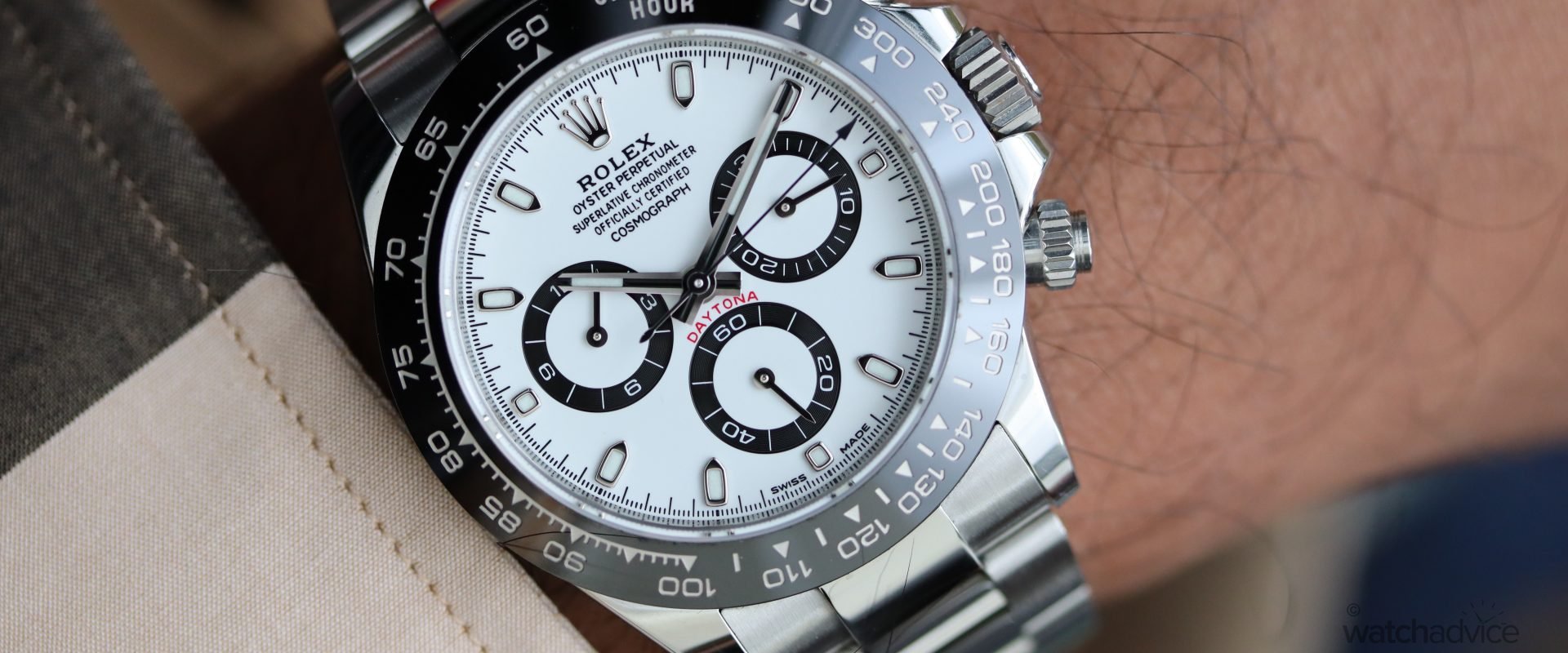Rolex Cosmograph Daytona 116500 Review
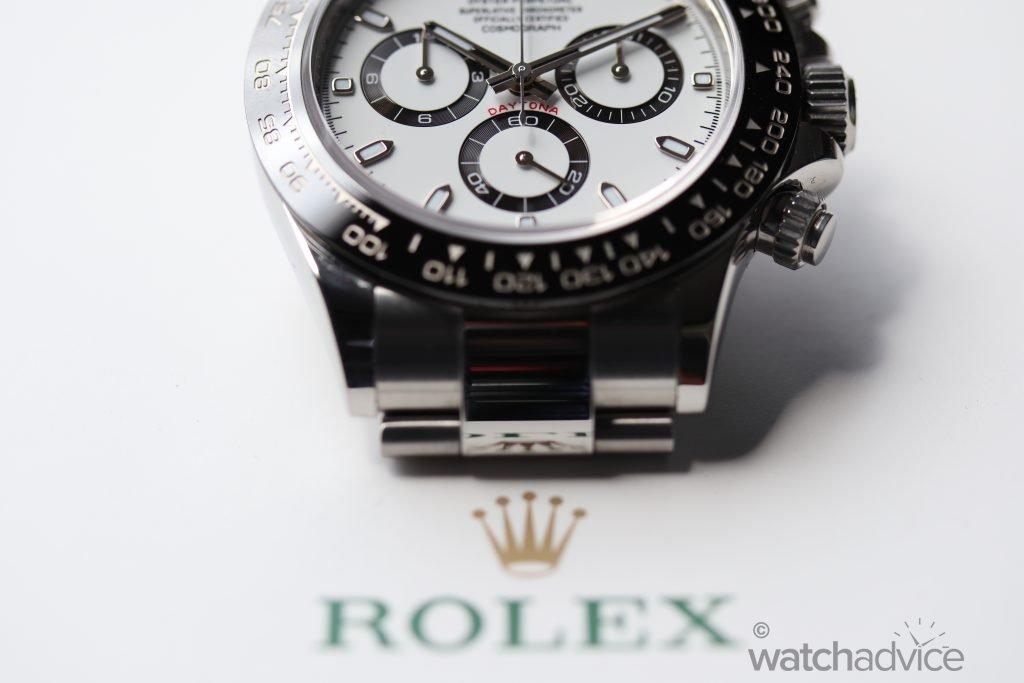
A timepiece born on the racetrack tying the history of Rolex and motorsport together, needs very little introduction. The rich history and sheer presence of the Rolex Cosmograph Daytona are partly why it’s one of the most sought-after watches in today’s Rolex line-up.
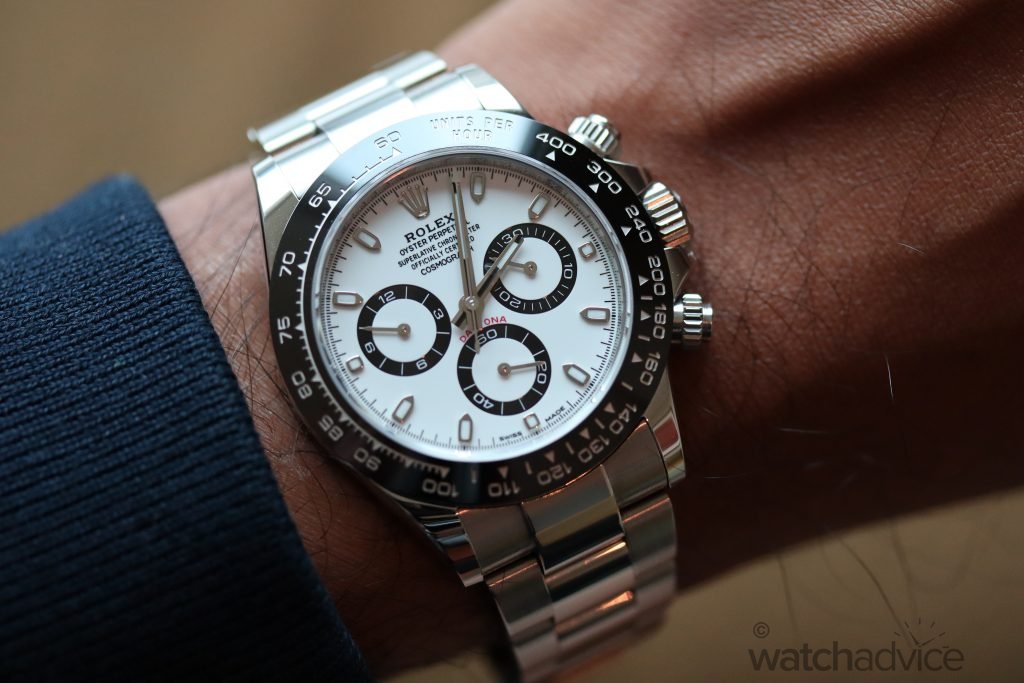
It was only just recently that Paul Newman’s Rolex Cosmograph Daytona auctioned for a staggering $ 17.8 million (USD). This was easily the most expensive timepiece sold to date. The current Cosmograph Daytona doesn’t exactly have the same worth as Paul Newman’s, however it does illustrate just how much the Daytona models in general are valued.
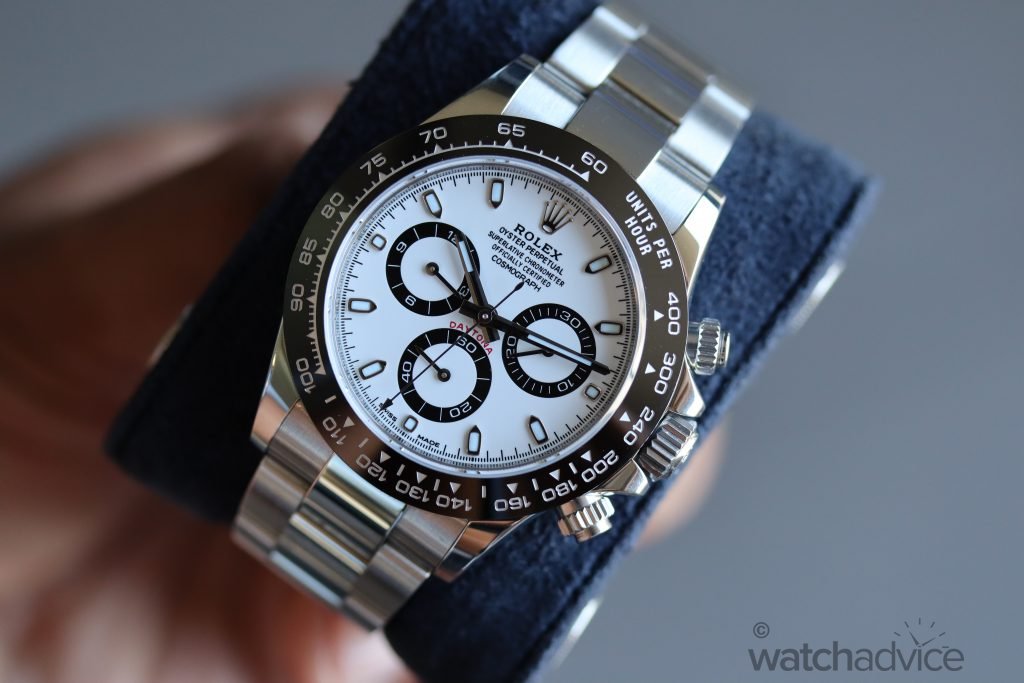
The Cosmograph Daytona was first introduced in 1963 for the purposes of meeting demands of drivers in the world of performance motor sports. Even the name “Daytona” derived from the world of motor sports itself. In the early 1900s, a racing track to set land speed records was found in Daytona, Florida. From 1903 to 1935 around 80 Speed records were set in Daytona, with 14 records being the fastest land speed set in the world. As more and more speed attempts and records were being set at Daytona, it caught a lot of global attention and eventually became known as the “world capital of speed”. Rolex’s ties to the Daytona international speedway track came about when Sir Malcolm Campbell who was known as the king of speed, was seen sporting a Rolex Oyster model during one of his speed attempts. This led to Rolex having close ties to Motorsport through the Daytona international speedway track and eventually becoming the official timepiece of the track. So when it came time for Rolex to create a watch for professional race drivers, it was only fitting that it be named after Daytona.
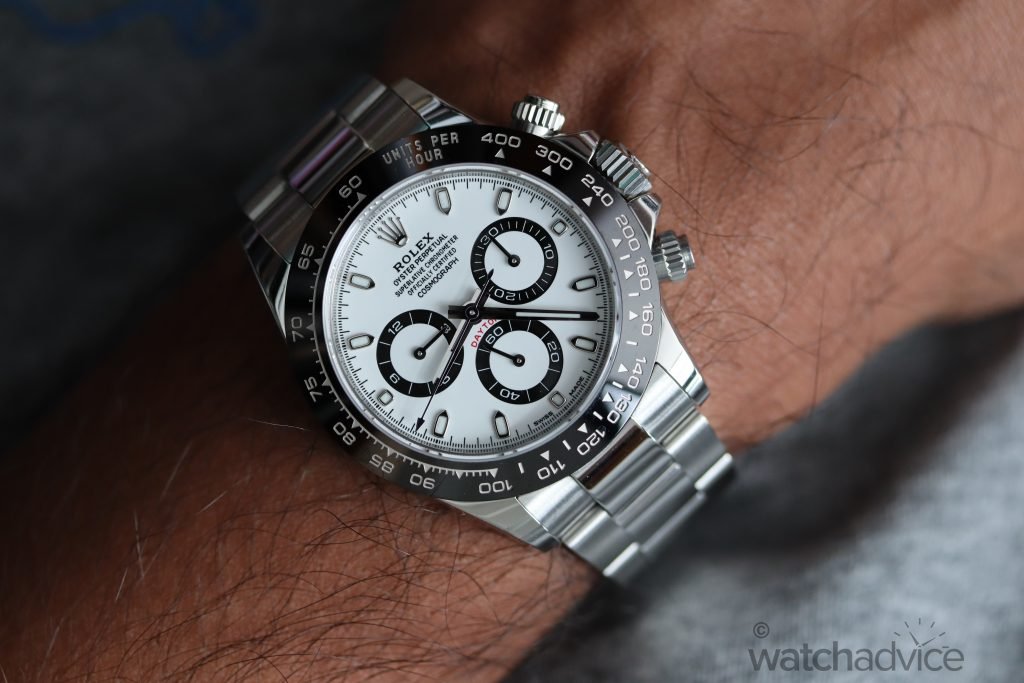
When the Daytona was first released in 1963, it was not known as the sought after timepiece that it is today. This is possibly due to the manual winding movement not being very popular back in the day. The modern Daytona today however has a much improved design and an in-house movement that is symbolic of a modern day Rolex.
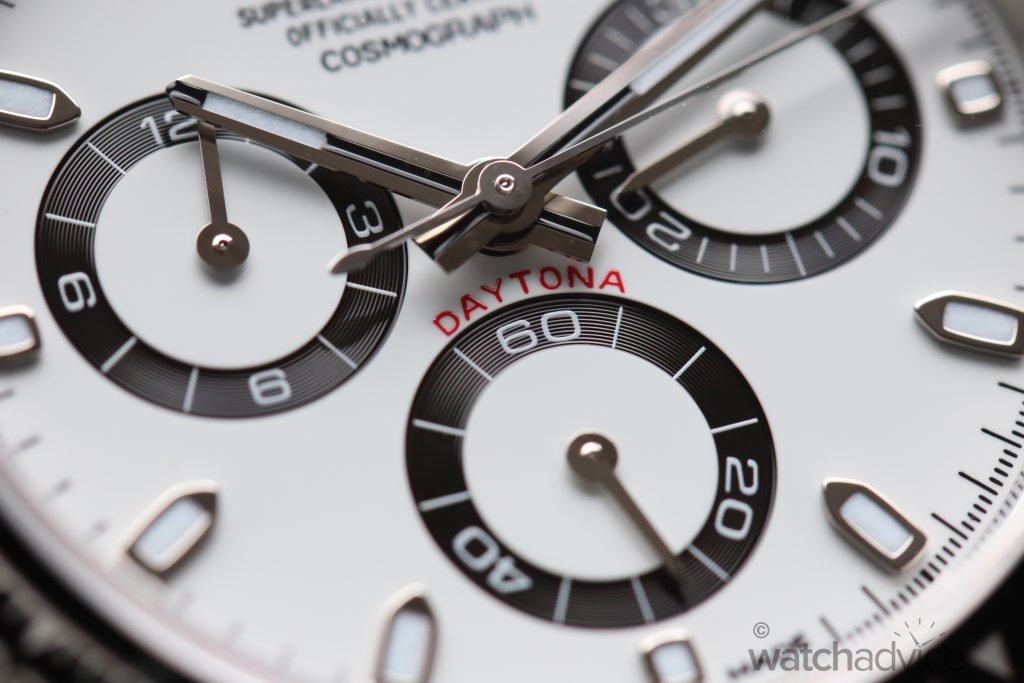
The updated Cosmograph Daytona is one of the most elegant sports watches in Rolex’s lineup. The dial tries to be as simplistic as possible while still sporting the tachymeter and chronograph functions. Rolex have purposefully designed a clean legible dial to make it practical for racing motorists. Unlike most of Rolex models, the Daytona doesn’t carry a cyclops date window. The addition of a date window would not compliment this symmetrically pleasing watch. The “Panda dial” is what is refered to as white dial with black accents (tachymeter scale, counters etc). The combination of black and white on the Ceramic Daytona makes it a very eye catching dial that is noticeable from some distance.
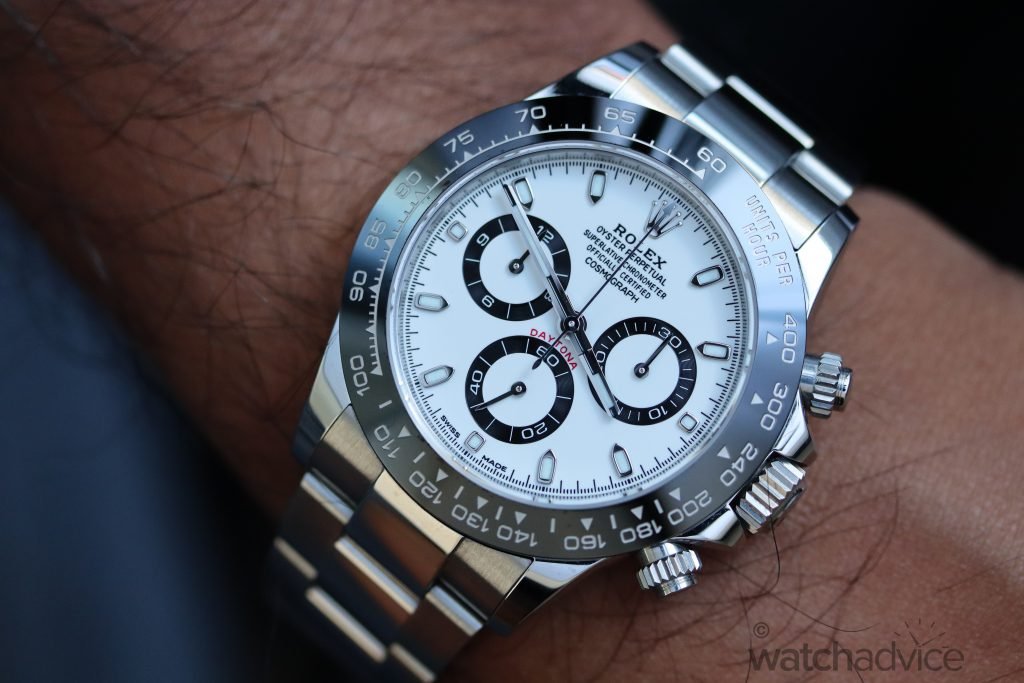
The time can be read on the watch using the hour, minute and small second hand on the 6 o’clock counter. The chronograph functions are run by the 3 o’clock and 9 o’clock counters with the centre hand representing the chronograph seconds. This centre hand allows an accurate reading of upto 1/8 second. All of this combined allows professional drivers to be able to map out their lap-times to precision.
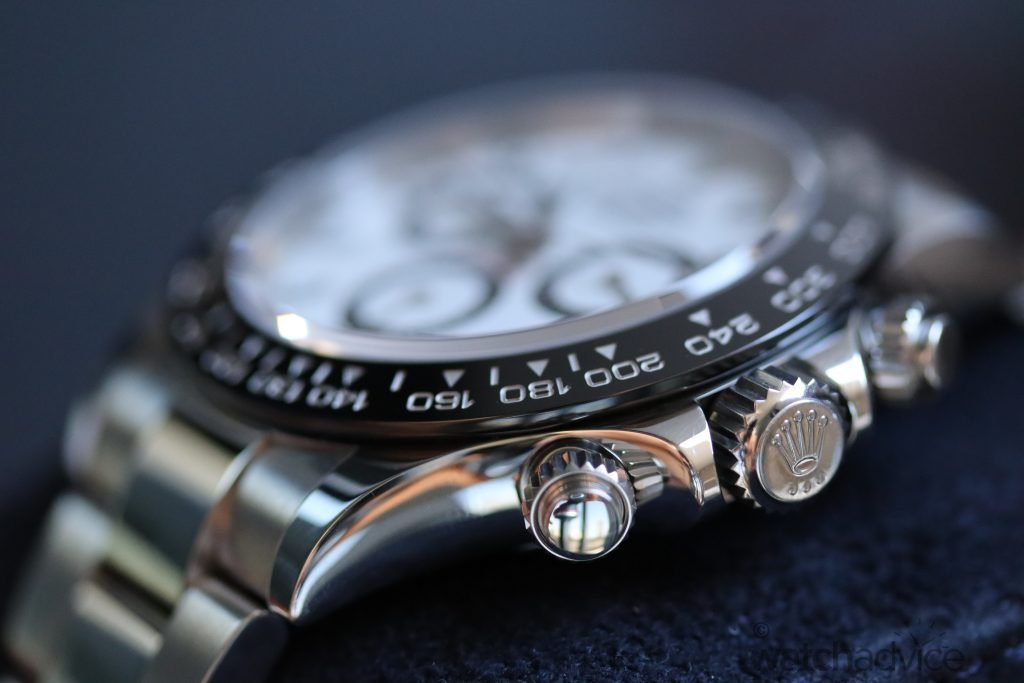
Rolex have a unique method for activating the chronograph functions. The chronograph pushers aren’t your typical pushers as each start/stop pusher has a screw down function, much like the crown itself. This ensures the waterproofness of the timepiece to 100 meters/330 feet.
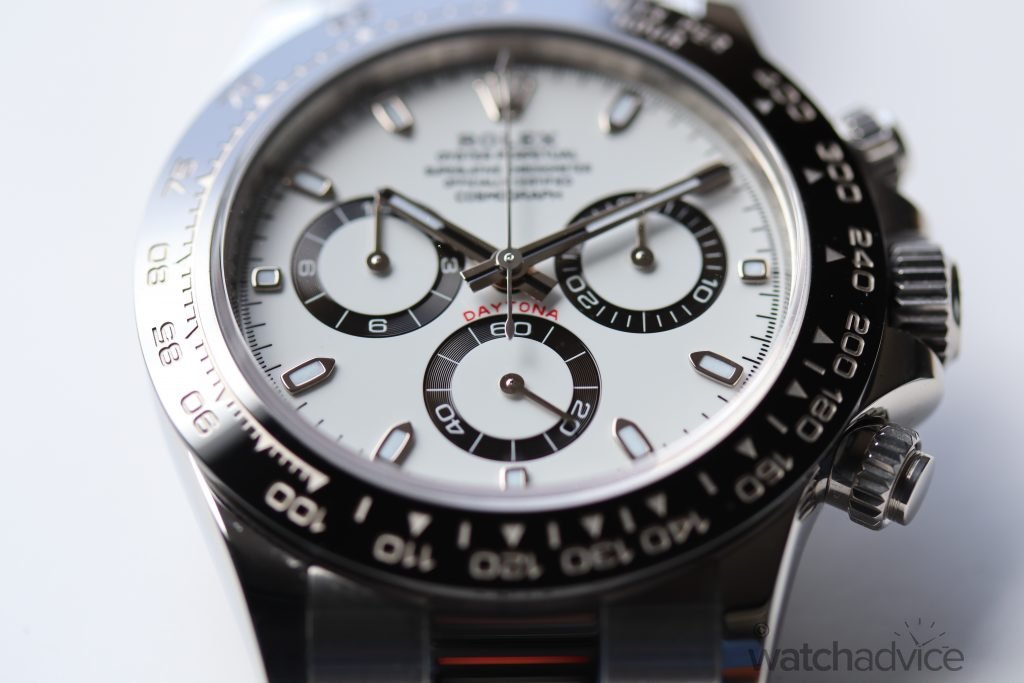
Now we get to the heart of it all, the Daytona’s engine. The current line up Cosmograph Daytona all have a Calibre 4130 movement. It didn’t always have this movement as back in 1988 Rolex was using a modified Zenith El Primero movement (Ref 16520), the calibre 4030. It was only in the year 2000 that Rolex wanted to keep the Daytona’s movement in-house which led to the birth of the calibre 4130. With production numbers under tight control and now equipped with an in-house movement, this really sent the Cosmograph Daytona into mainstream desire.
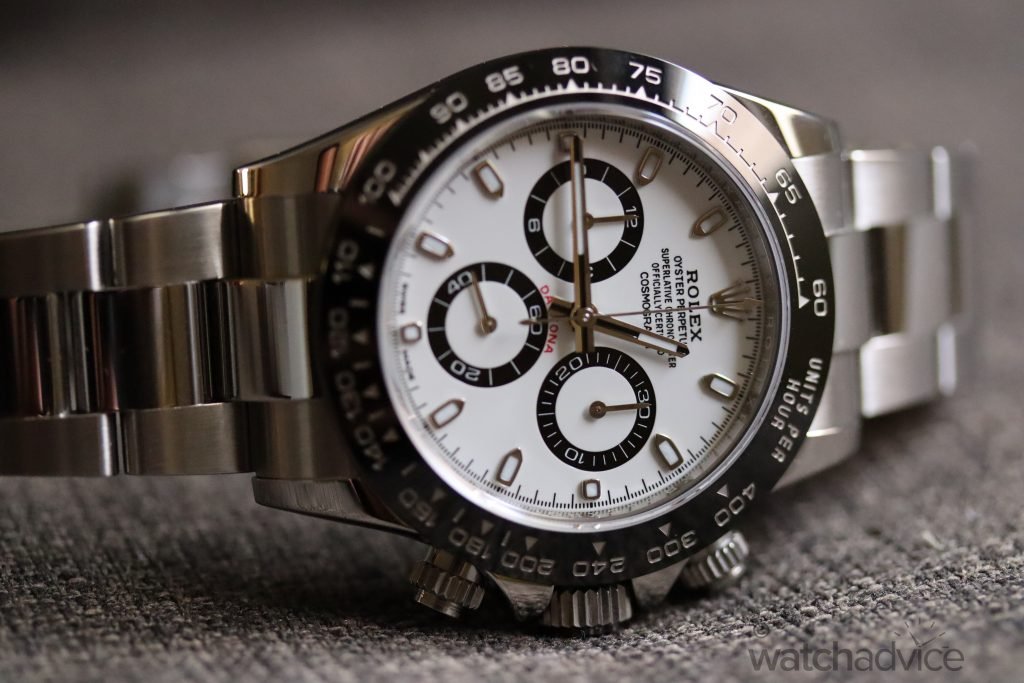
The calibre 4130 is a self-winding movement that has been engineered thoroughly to reduce the number of components required for the functions of the chronograph. In order to accurately position the seconds hand when the start/stop pusher is pressed, the calibre 4130 uses a vertical clutch to operate the chronograph. Like other Rolex models, the calibre 4130 uses a Parachrom hairspring that offers even greater resistance to temperature variation and shocks. The Calibre 4130 is made up of 44 jewels and has a 72 hour power reserve, which is well above the average of 42 hours. This is all tied together neatly with the COSC certification that is given to all of Rolex’s perpetual movements.
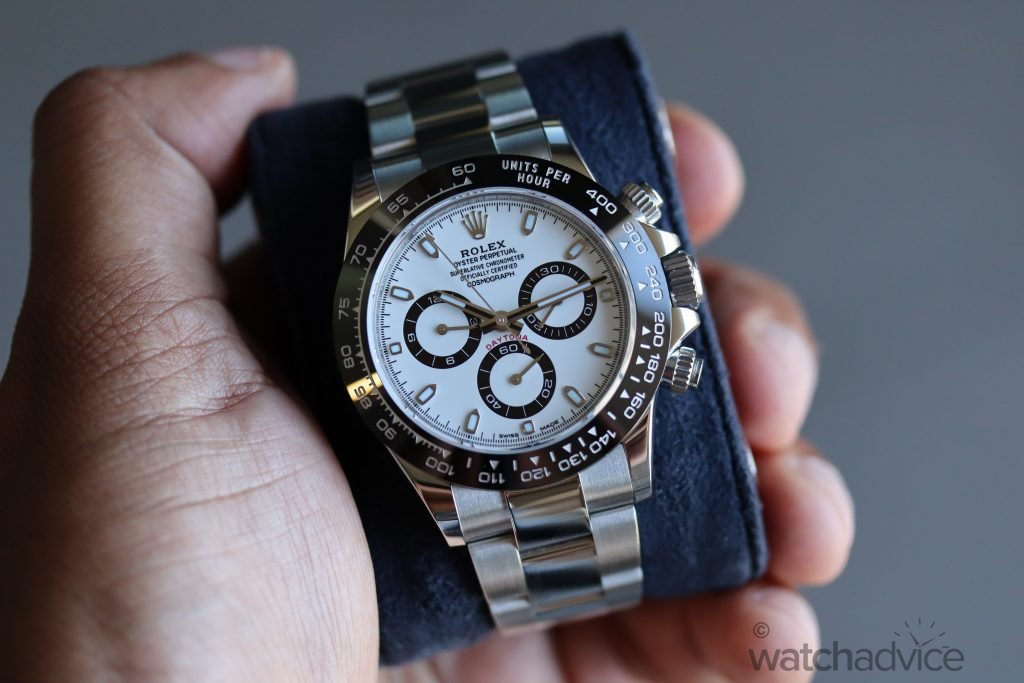
How does it wear?
The Cosmograph Daytona is a versatile watch that is suitable for formal and/or sporting and casual events. On a 7 inch wrist, the watch sits comfortably with the lugs placed nicely on the wrist. The thickness of the watch is approximately 12mm which is a great size for everyday wearability as the watch wouldn’t stick out and be overly exposed to potential nicks and bangs. With this thickness, the watch can be paired well with blazers, jackets and suit attire.
The dial and Oyster bracelet are so appealing that it makes you want to wear it any chance you get. This desire comes at a price though. Due to the high demand of this watch and with production being drip fed in small numbers, there is a lengthy wait list!
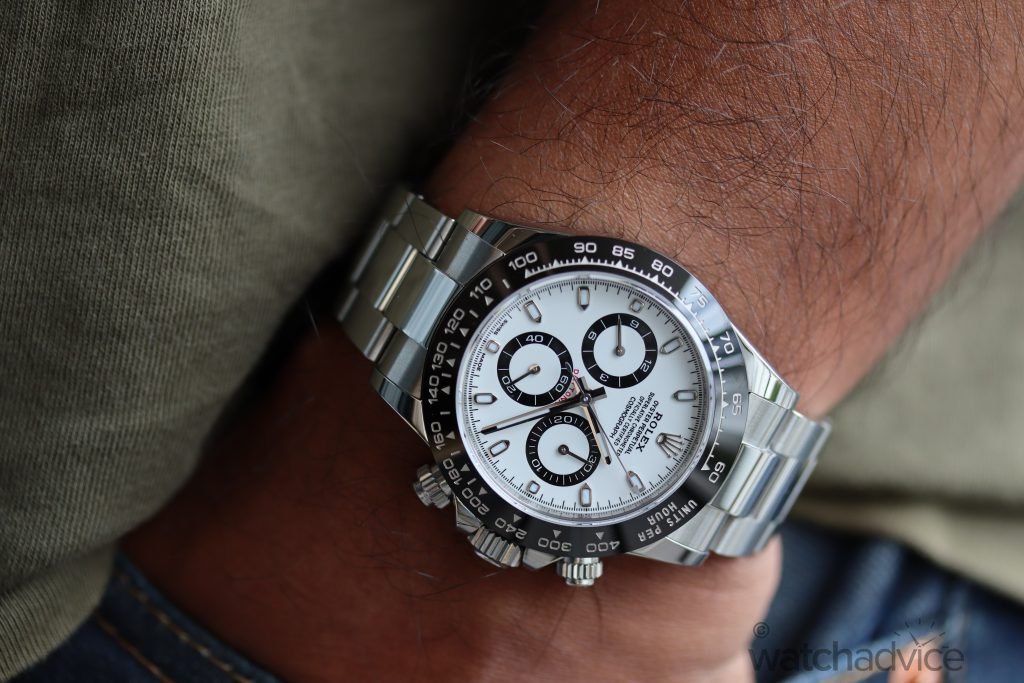
Rolex Ceramic Daytona 116500LN Specification:
- Case diameter : 40mm
- Case Material : Oystersteel
- Bezel : Black monobloc Cerachrom Bezel in ceramic with engraved tachymetric scale
- Crystal : Scratch-resistance Sapphire
- Water Resistance : 100m/330 feet
- Movement : Perpetual, mechanical chronograph, self-winding 4130 movement.
- Precision : -2/+2 sec/day after casing
- Power Reserve : Approximately 72 hours
- Bracelet : Oystersteel bracelet. Oysterlock safety clasp with easylink 5mm comfort extension link


